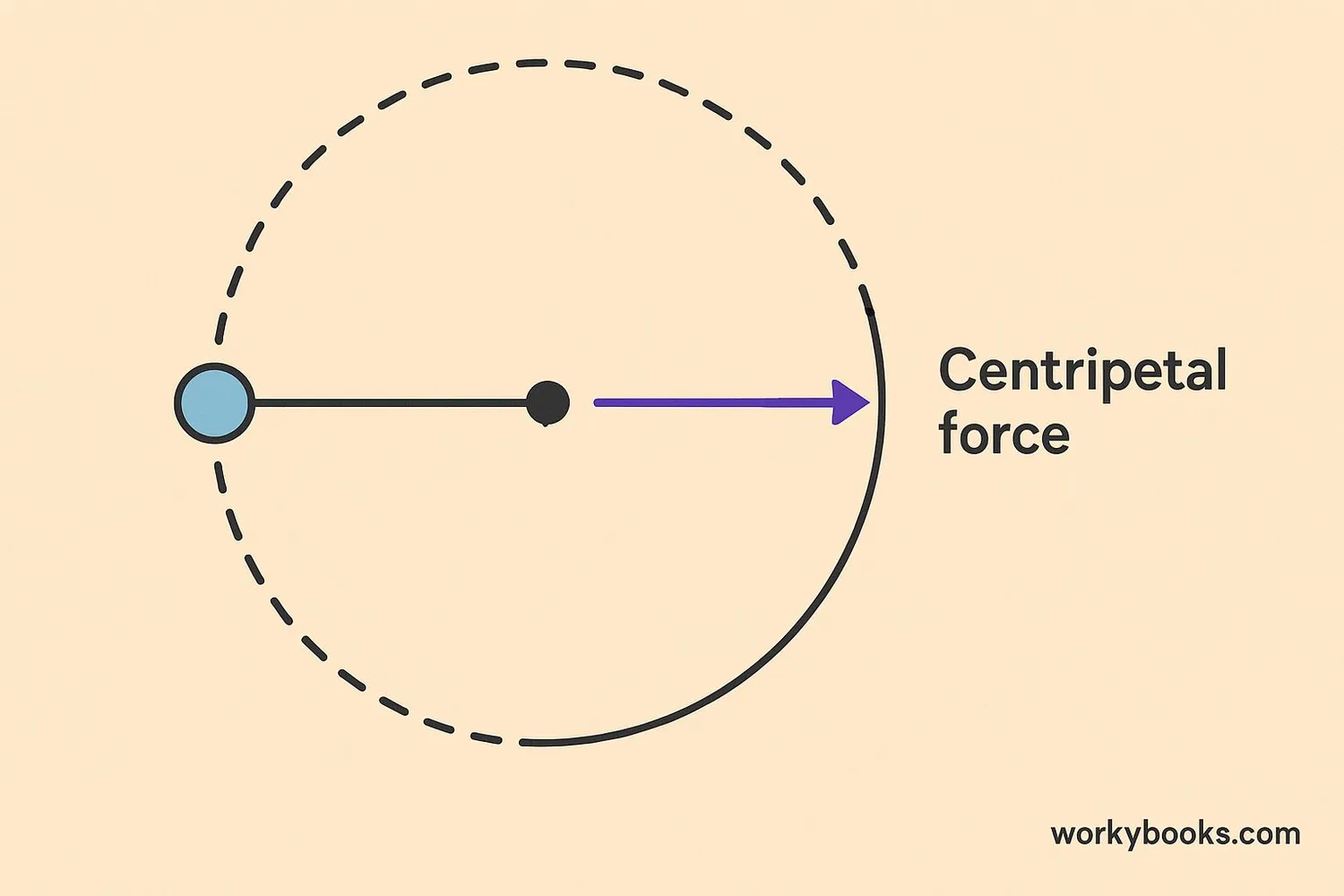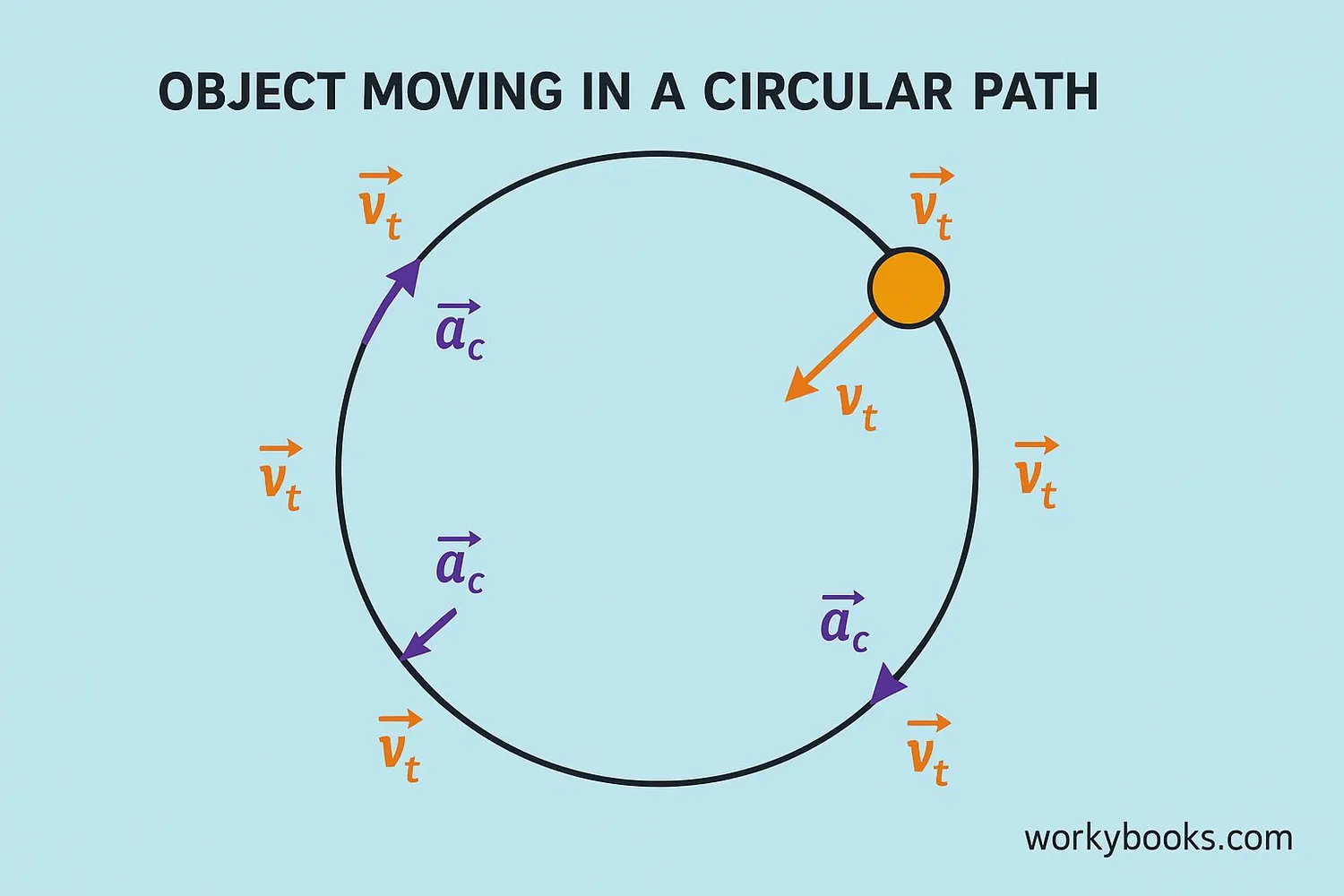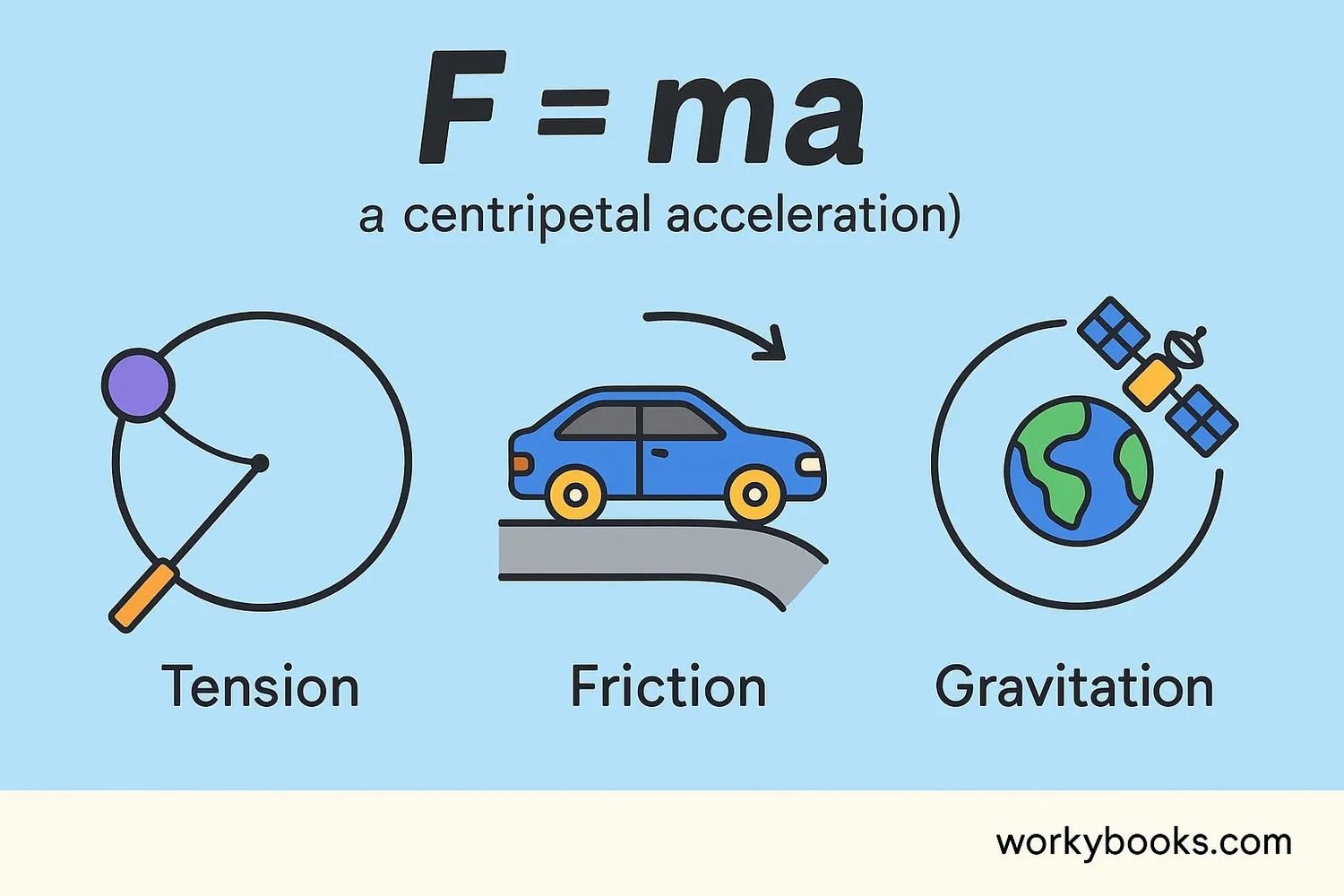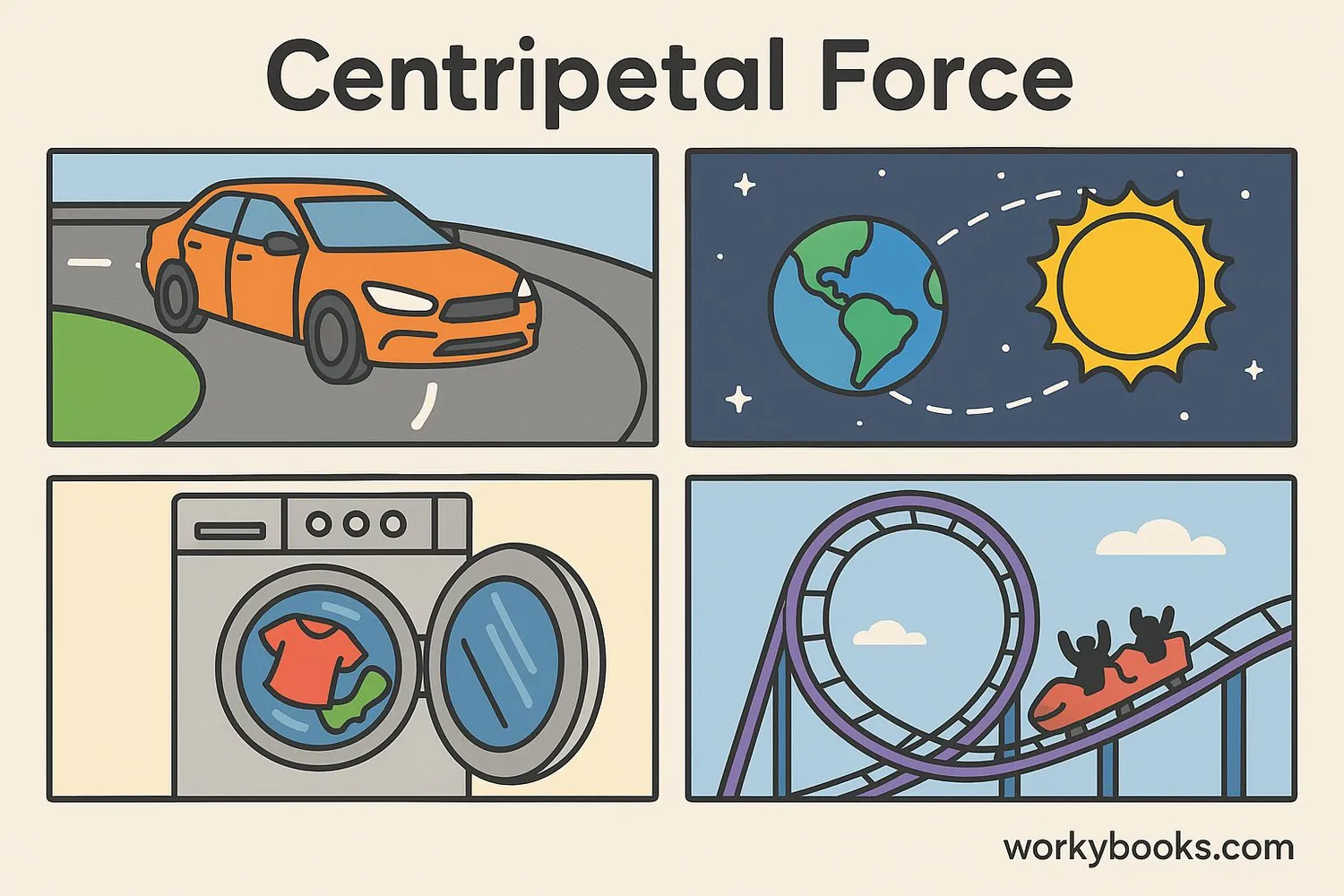Centripetal Force - Definition, Examples, Quiz, FAQ, Trivia
Discover the invisible force that keeps things moving in circles!
What is Centripetal Force?

Centripetal force is the invisible push or pull that keeps objects moving in a circular path. The word "centripetal" comes from Latin words meaning "center-seeking." This force always points toward the center of the circle!
When something moves in a circle, it's constantly changing direction. Centripetal force is what makes this possible. Without it, objects would move in a straight line (according to Newton's First Law). This force comes from different sources depending on the situation - tension in a string, friction with the ground, or even gravity!
Force Fact!
Centripetal force isn't a new type of force - it's a name we give to whatever force is making something move in a circle!
Centripetal Acceleration

When an object moves in a circle, even at constant speed, it's accelerating because its direction is constantly changing. This acceleration is called centripetal acceleration and always points toward the center of the circle.
The formula for centripetal acceleration is:
a = v² / r
Where:
• a is centripetal acceleration (m/s²)
• v is tangential velocity (speed along the circular path, in m/s)
• r is the radius of the circle (in meters)
Tangential Velocity
The speed of the object along its circular path
Radial Direction
Acceleration points toward the center
Constant Change
Direction changes constantly at uniform speed
Acceleration Insight!
Even when moving at constant speed in a circle, you're accelerating because direction is changing!
Newton's Second Law in Circular Motion

Newton's Second Law tells us that force equals mass times acceleration (F = ma). For circular motion, the acceleration is centripetal acceleration (a_c). So the centripetal force is:
F_c = m × a_c = m × (v² / r)
This means:
• The faster something moves (greater v), the more force needed
• The smaller the circle (smaller r), the more force needed
• Heavier objects (greater m) need more force to move in circles
Mass Matters
Heavier objects need more force for same circular motion
Speed Effects
Doubling speed requires four times the force
Radius Impact
Tighter turns need more force than wider turns
Real-World Examples

Centripetal force is all around us! Here are some common examples:
Car Turning
Friction between tires and road provides centripetal force
Planet Orbits
Gravity provides centripetal force for planetary motion
Amusement Rides
Roller coaster loops use centripetal force to keep you in your seat
Banked Curves
Curved roads tilted to use horizontal component of normal force
Without centripetal force:
• Cars couldn't turn corners safely
• Planets would fly off into space
• Roller coasters couldn't make loops
• Washing machines couldn't spin-dry clothes
Understanding centripetal force helps engineers design safer roads, exciting amusement rides, and even space missions!
Centripetal Force Quiz
Test your knowledge with this fun quiz! Answer all 5 questions to see how much you've learned.
Frequently Asked Questions
Here are answers to common questions about centripetal force:
Fun Physics Trivia
Discover some amazing facts about centripetal force!
Space Applications
Centripetal force is used to create artificial gravity in space stations! By rotating a spacecraft, the centripetal force pushes astronauts against the outer wall, simulating gravity.
Animal Physics
When dogs shake water off their fur, they rotate their bodies at about 4-5 rotations per second. The centripetal force generated can be up to 70 times gravity!
Human Centrifuge
The highest g-force ever survived by a human was 214 g! This was achieved in a rocket sled using centripetal force principles. The person experienced this for a fraction of a second.
Planetary Motion
The Sun's gravity provides the centripetal force that keeps Earth in orbit. If Earth moved just 10% faster, it would escape the solar system!


